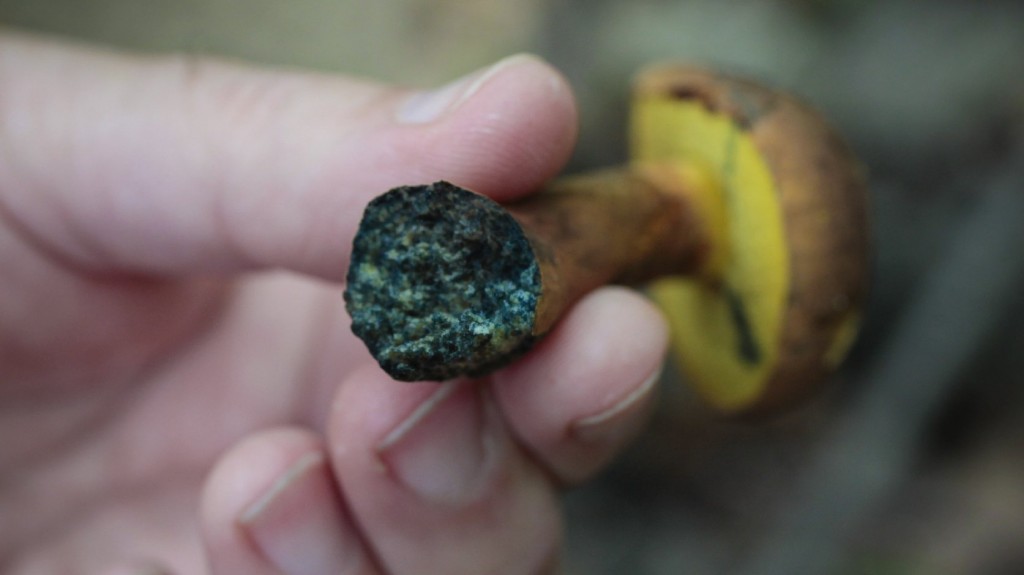Mushroom hunting has grown more popular elsewhere, too. Todd Spanier, a San Francisco-based commercial mushroom collector and vendor, tells The Salt that "it's a global thing." The slow food movement, Spanier says, combined with the Internet age, is inspiring foodies everywhere to walk into the woods with their eyes on the ground.
Sure enough, concerns have grown in places as scattered as England and Washington, D.C.-area parks about the burgeoning numbers of fungi foragers, both commercial and recreational, and the effect they may be having on the land.
Foragers are hungry for more than mushrooms, too. In the eastern U.S., the number of people hunting for ramps, a fragrant onion-odored wild bulb, has increased dramatically — perhaps even unsustainably. In New York City's Central Park as well, how-to tours like those of "Wildman" Steve Brill have reportedly caused a boom in the number of urban foragers seeking edible greens and roots, creating a nuisance for city gardeners and park rangers.
In Salt Point, Farcau believes mushroom-collecting tours are having a powerful multiplying effect. "These tour leaders will take out 10 or 15 people, and each of them will tell 10 or 15 people, and each of them will tell 10 or 15 people," he says.
Not that mushroom hunting is anything new. Across Europe and Asia, generations of families have returned to the same forested places to collect edible fungi. These mushrooms — including famed truffles, morels, porcini, chanterelles and matsutake — attract people with their unique flavors and aromas, which cultivated species tend to lack.
In California, the core of the mushroom hunting culture was traditionally European immigrants and a small community of eccentric hobbyists. But foraging classes, guidebooks, Internet buzz and even mushroom-identification smartphone apps have brought mushroom hunting into mainstream foodie culture.
David Campbell, who leads mushroom hunting outings with his company, MycoVentures, has made Salt Point State Park the location of monthly forays. He says he recognizes that he is "guilty" of helping to fuel the foraging craze.
"It's a delicate balance between sharing, which I like to do, and protecting your [mushroom] patches from public knowledge," says Campbell, who charges $45 a head for one-day outings.
Another regular Salt Point mushroom hunting tour leader, Patrick Hamilton, concedes that his guided walks in the woods, which cost $90 a head, may be having an impact on a limited resource.
"I have been personally responsible for turning a lot of restaurant chefs on to wild mushrooms, and I've sometimes asked myself, 'Is this really what we want to be doing?' " Hamilton says.
In most areas open to mushroom hunting, collectors must abide by strict limits. At Salt Point State Park, for example, hunters cannot take more than 5 pounds of mushrooms per day — though many people break this rule, ranger Farcau says.
Mushroom collecting is prohibited in most county, state and national parks in California, and while there has been informal discussion of closing off remaining legal collecting areas, some mushroom hunting enthusiasts say the best thing to do would be the opposite — that is, legalize the activity in more places.
"Salt Point gets hit so hard because it's the only place left to go," says Ken Litchfield, a hobbyist collector and teacher at Merritt Community College in Oakland, Calif.
Hamilton envisions a similar solution to alleviating the pressure on Salt Point State Park:
"If they would just open up all the parks to [mushroom] hunting, you wouldn't even notice us."
Copyright 2013 NPR.
